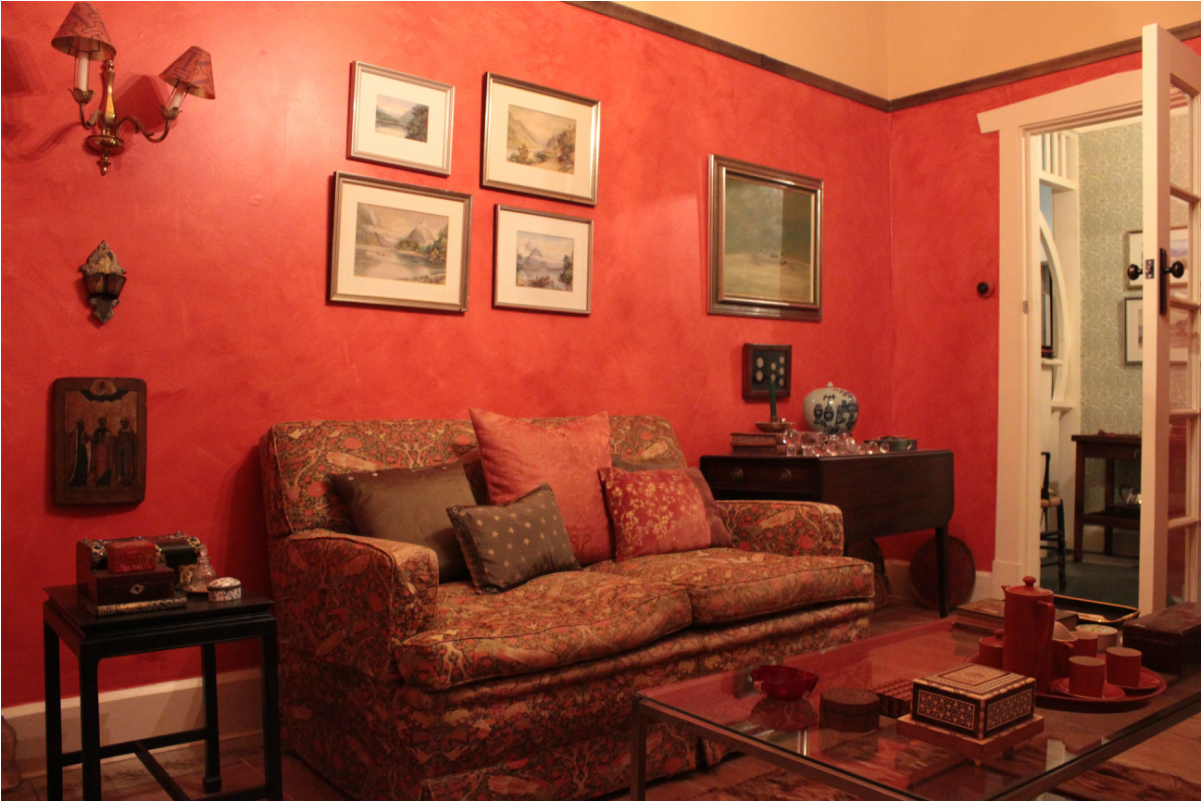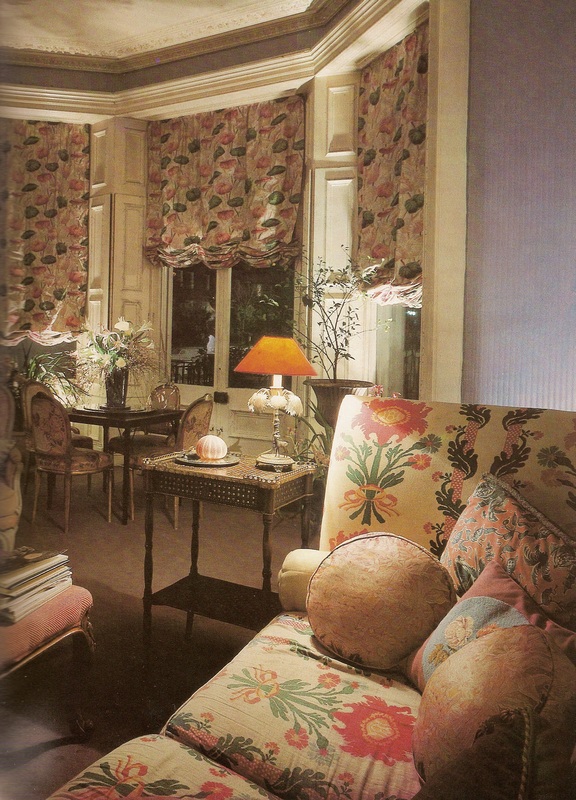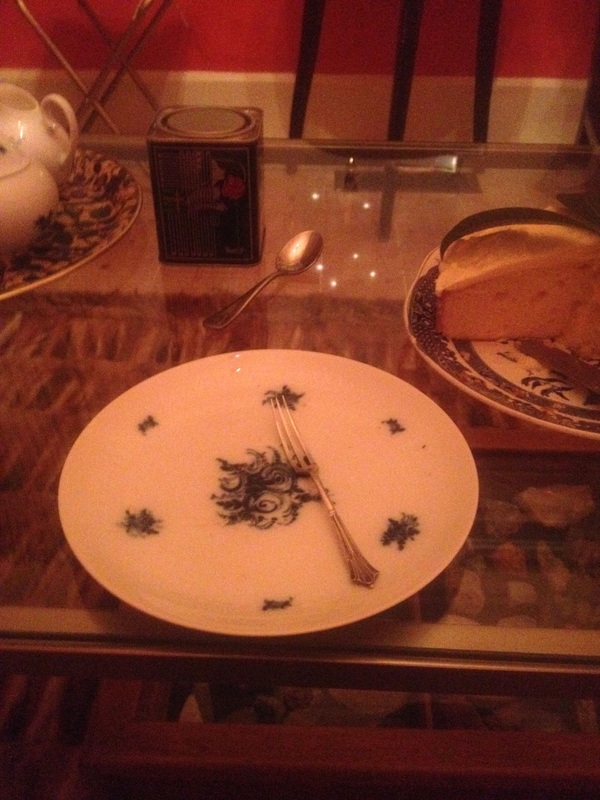
|
As you gather I am not a minimalist. I like to collect bits and pieces that tell the story of my life. So my house if full of little treasures that have been given to me by friends and family or bought when I have been in special places. Sometimes these items are not always 'designer' but they might make reference to a certain experience or special event. The challenge is to get them to all fit in like they belong to the 'still-life' I am creating. 
This eighteenth century 'cricket table' has a lovely wavy top showing the timber's grain. It holds little pocket books and old silver frames with family photos. The candlestick belonged to my parents On the window sill is a few pieces of 18th century pewter and a french jam jar that we bought in an antique store in Adelaide.
0 Comments
As you have now guessed I don't shy away from colour when it comes to design and decoration. While neutral colour schemes can be calm and soothing sometimes a bit more excitement is required. Our red sitting room is used mostly in the evenings to gather with guests before dinner. We wanted a glamorous wow effect for this space. We decorated this room back in 1988. It hasn't changed very much over the years. We started with the two two seater sofas covered in a Warner's linen called 'Chinese Panel'. The sofas inspired the red wall colour. The colour we wanted to evoke was laqauer red of a antique tray or reminiscent of Pompeii. The incandescent lighting and the red walls make everyone glow in this room. The walls are finished with a glazed 'broken colour' effect, that gives the colour both more depth and creates the illusion of space. To balance the rick red walls we used a soft gold coloured ceiling, off white skirting boards and timber work and bronze coloured picture rails. This room was the first one we did in this house. It was the room to escape to when the rest was a demolition and renovation site. It is furnished with an assortment of pieces from different eras. The coat cupboard was made by Max's grandfather in the 1920's. A three legged cricket table circa 1760 made from elm was my first antique purchase in my new job at Crichton Interiors many years ago. I decided to set a policy of each year buying an antique piece to slowly build a collection of treasured items. It came from Lee Harper Antiques in High street, Armadale. The country Chippendale carver Max bought from John Dunn Antiques. We covered it in a piece of crewel embroidered cotton that picks up the warm rust colour of the room. A pembroke table from C1790 holds a quirky collection of crystal bottle stoppers. They refract the light. A fur rug made from Fox paws covers the old pine floor, that we waxed to keep the colour soft. To add some modernity the brass and glass coffee table sits on the rug allowing the rug to be seen as well as Max's childhood collection of rocks and minerals displayed in a display case, also made by his grandfather. The paintings on the wall range from my dodgy fake 'our lady of the snow" 15th Century oil to early twentieth century New Zealand water colours, to an oil known as' the pirates and pumpkin people' from the mid 1970s. Defintely an eclectic mix. We added 'silken satin' curtains that spill onto the floor and lots of cushions in treasured fabrics, hand printed silk taffeta, patterned velvet, cotton damask and even a chintz pattern with a monkey in the design. This room is nicknamed 'monkey's room' as the Chinese Panel' fabric has little green monkeys in the design. I added a monkey cameo to the stencilled border on the floor and we found a bronze monkey candlestick. 
Rich red walls contrast with golden coloured 'silken satin curtains that theatrically spill onto the floor.The Warner's linen 'Chinese Panel' fabric inspired the red walls for this room. Hand printed silk cushions have napoleon bees and stars. I made these many years ago. The silk damask cushion is the most recent, it is a sample from Gainsborough Mills, England. The green silk cushion with the pearl buttons has bound button holes.
I have been reading a really lovely blog called Aesthetic Oiseau by Daniela M. Shuffler. Daniela lives in Washington and documents her design adventures and shows pictures of her pretty little house that she and her husband have been renovating. I love to see how other people tackle renovations. Between projects Daniela post images of fabrics, rooms and accessories that inspire her, and a post about a 'quadrille' fabric caught my eye. I recognised this fabric as I had seen in a book that I own, but it was a stencilled screen. It is a very eye catching pattern. I love the centre motif and the leaf border that curls around a small checkerboard. Then the other night I was sorting my 'World of Interiors' magazines into date order ( yes, sad I know) and I naturally was having a little peek at the articles as I worked and I spied this same pattern used as upholstery fabric on a sofa. It was acknowledged with the name of 'Victor Hugo'. So I did some 'googling' and found that this fabric was produced by Pierre Frey and they have reissued it, under the name 'Le Manach Prints', and this pattern was named after Victor Hugo, famed author for Les Miserable, who is thought to have owned the original document that inspired this fabric. It seems that Victor Hugo too, was keen on interior decoration and design. He designed his own apartment in Paris and at one stage he owned a country house as well.He was very fond of chinoiserie and created very exotic richly coloured interiors. But wait there is more to this story. Years ago when Max and I developed the decorating scheme for our red sitting room I adapted the border I saw on the screen and stencilled it as a border on our pale coloured pine floor. We were minimising the sanding of the black japanned edges and decided a painted and stencilled border would frame the old pine boards well.  This screen appeared in the book, The Art of Decorative Stencilling, Adele Bishop and Cile Lord, published by Thames and Hudson, London 1976. This screen is responsible for starting my stencilling career, many years ago as this was the first time I incorporated stencilled pattern as part of a scheme. Somewhere in all the traditional rooms I do you will find a stencilled detail. I just can't resist. Do you keep cuttings or scans from magazines for inspiration? I know I do, I have been doing this since I was quite young. Cleaning out some papers in my studio the other day I came across this image. I cut it from a 1970's magazine, all those years ago, but it still resonates with me. ( Sorry about the glue used to paste it into a book). I like the strong background, that unifies all the objects in the room.The wallpaper is 'Indian' designed by William Morris, around 1870, a subtle tonal pattern that gives depth to the walls. The deep blue/grey colour which is repeated in the cornice and skirting boards is a counterpoint to the orange coloured timber of the antique table, picture frames and mantle piece. It is a warm cosy room, even thought the walls are bluey grey. The other piece that attracts me to this room is the linen covered settee in a chinoiserie floral, probably by GP & G Baker, possibly 'peony garden' or 'magnolia' famous patterns that appeared in many colour ways throughout the years. Linen upholstered sofas are classics that never go out of style and are practical and easy to live with. I also love the layering of the pictures on the walls. There is plenty to look at, but portraits seem to be the main theme. There are some interesting plates and ceramic objects. It looks like a room that has taken many trips to the auction rooms to evolve. As this cutting is so old I cannot reference it in any way so if anybody recognises it please let me know. Also: Morris and Co in the U.K. still have this pattern, but in different colour ways and GP & J Baker fabrics still have similar classic floral linen prints available too.
One of the most exciting ways to shop is visiting the local auction rooms bidding for little treasures. I like to go to Leonard Joel, in Prahran. We make an adventure out of this. Joels publish the catalogue the day before online and I check out possible items and estimates. I make a list. We go and have a look, and usually something else catches my eye. Next day we go to the auction and spend a few hours watching, waiting and bidding. The furniture auction starts at 10am and the decorative items at 12.00 sometimes we go and have lunch or coffee between lots. There are antique dealers and many interesting characters who regularly attend adding great theatrics to the day. This week I came home with some lovely books with leather bindings, an 18th century chinoiserie plate, two Japanese" Imari" patterned plates, a set of fruit knives and forks and a papier mache crumb tray and brush. You can see it is quite a stash, I only went for one plate! Now we get to spend time finding places to put all these bits and we can spend hours pouring over the books.
Yes it is still cold but all that rain has to be good for our water catchments if not for my renovations. So to make the most of having time to snuggle down this weekend I decided we might christen a tea set that I bought a few years ago and have been waiting for a special occasion. So I baked a cake, donned the cashmere and we settled down to enjoy a cup of tea in our lacquer red coloured sitting room, where just the colour warms you up. We cleared the brass and glass coffee table of its usual 'tablescape' and laid out our Rosenthal tea set. I placed it on an old 'Liberty of London tray'. Two generously sized tea bowls, and saucers, two side plates matching milk jug and sugar bowl and a grand teapot. The design originates from the 1780s and is the classic blue and white hand painted floral pattern. You can see from the photos it is very pretty and very classic. I served black tea that we bought in Glasgow at the 'House for an Art Lover' in its Charles Rennie Mackintosh tin, which has a 'chinoiserie feel' being black with some little red accents. When tea was first introduced to Europe it was very expensive and the caddies where the tea was stored were items of beauty and kept on display in the sitting room rather than the kitchen. I trimmed the cake with bay leaves for decoration and we broke out the silver teaspoons and cake forks and played ladies for a couple of hours, basking in the warm reflection from the red walls. This room we designed to be used as a winter sitting room or a dramatic night reception room. |
AuthorHi I am Elizabeth an interior designer who lives in Melbourne, Australia in a little Californian Bungalow cottage with my partner, Max, who is also an Interior Designer, and our beloved furry children, Doris & Ernest. I believe that design can make our lives more rewarding and productive. I love, architecture and design theory but my everyday passion is fabrics and decoration, as I don't think we should get too serious but have fun with our homes and enjoy the process of creating our own environments. I am interested in classic cars, and collect Georgian and Mid Century furniture. Archives
July 2018
Categories
All
|



















 RSS Feed
RSS Feed

